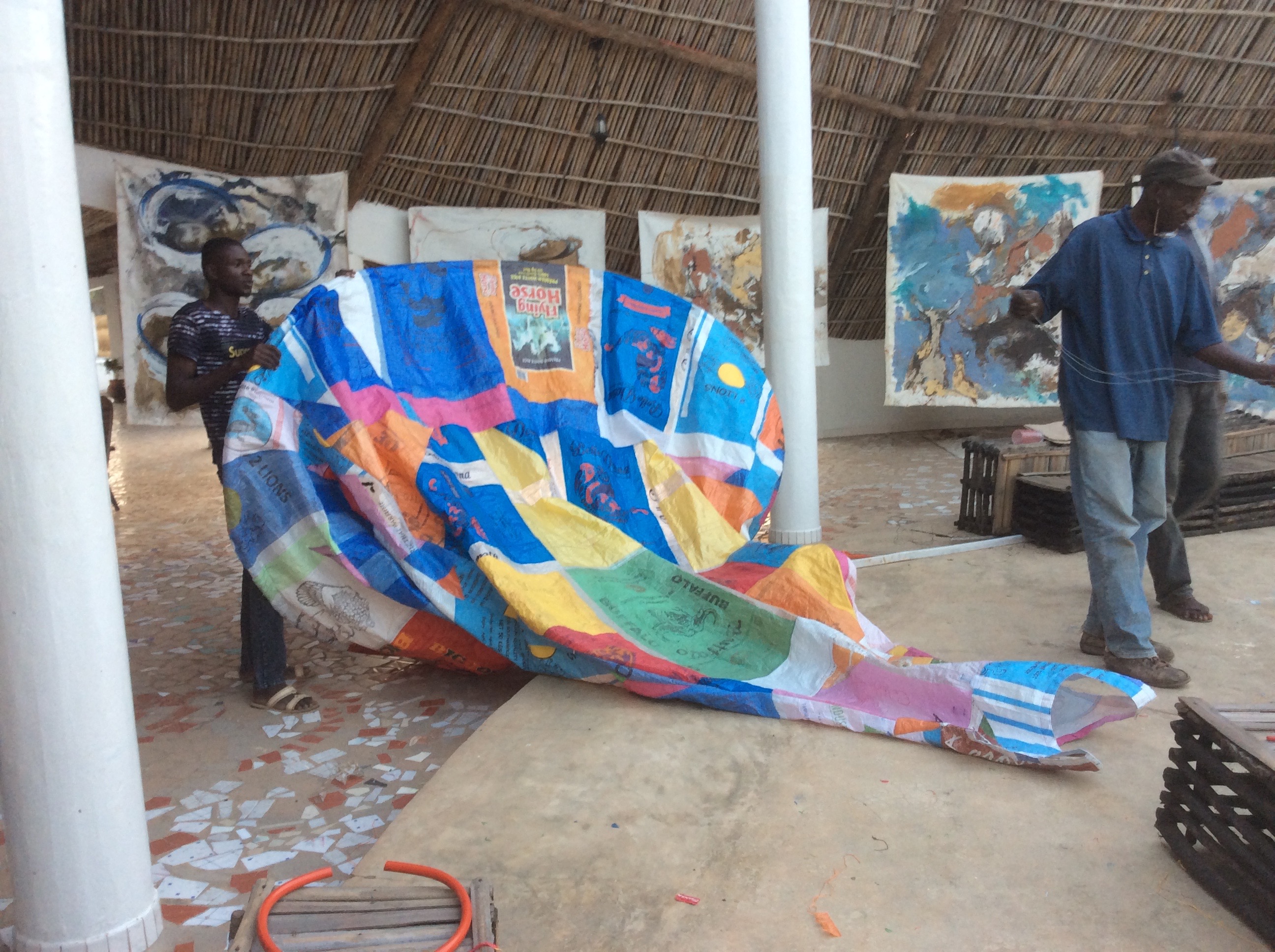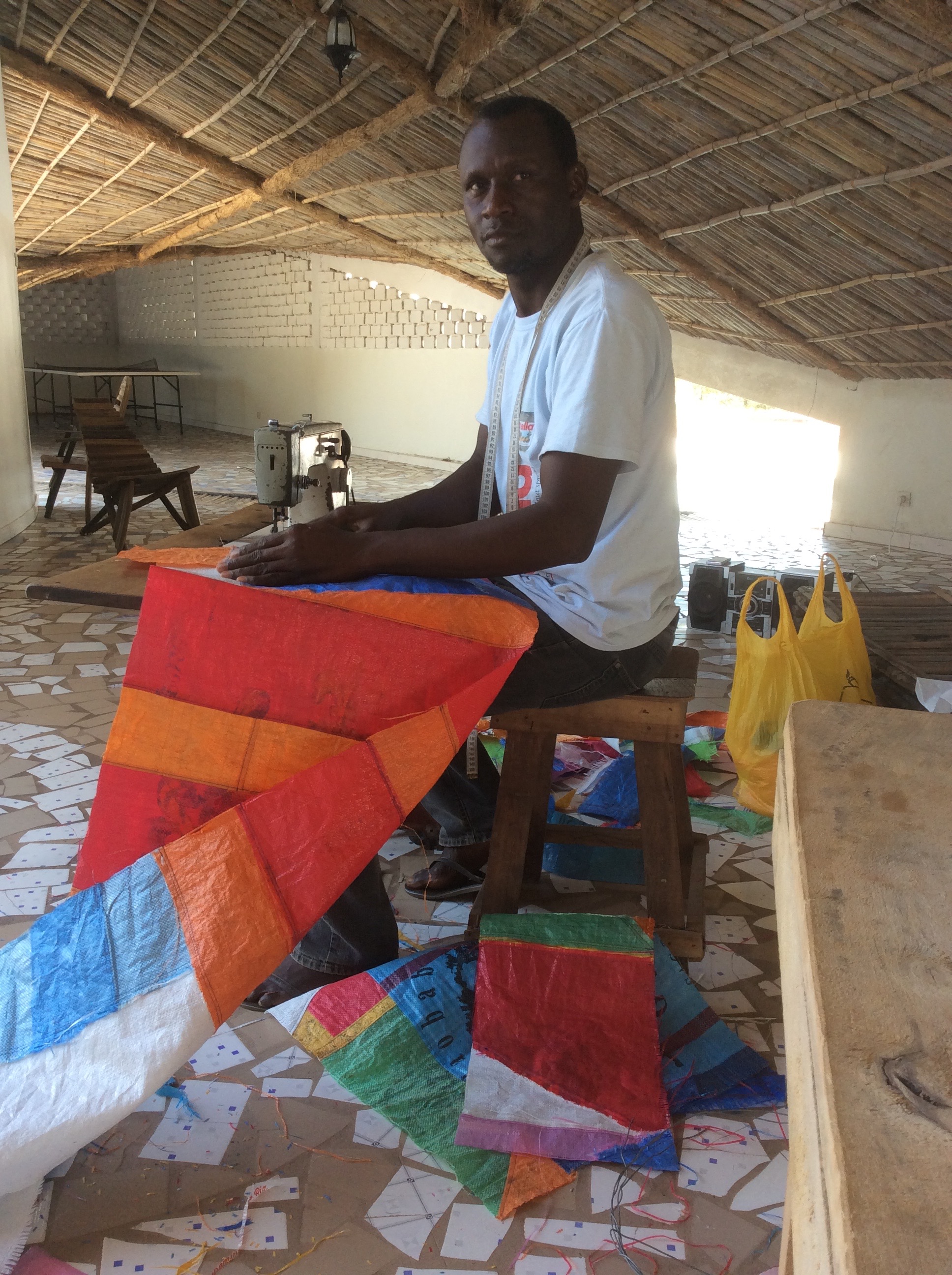Thread | Sinthian, Senegal
2016
This project is dedicated to the women of Sinthian, Senegal, where I created this work in an artist residency at Thread, a project of the Joseph and Anni Albers Foundation. Given this incredibly challenging time on our planet politically and environmentally, I feel the potential of extending our hearts and minds on the ground. I firmly believe that making the type of connections such as those possible at Thread is one way in which we can attempt to heal the social and environmental destructive forces of today.
I began La Grande Robe imagining that I would make something out of rice sacks. Having spent much time in West Africa over the last 15 years, it is clear to me that rice is largely the sustenance of the continent and I wanted to express this. After spending several weeks in the village of Sinthian I realized that the focus of one project would be the women there. There are many ways with which I could have “taken” images and stories to create new work, yet I wanted the project to go deeper and trusted that, with patience, more would be available to me and to the village residents. I embedded myself in the community, learning from them and teaching yoga and drawing, among other things.
The women there are a force and exude strength, tenacity, perseverance and creativity with a constant joie de vivre imbuing all of their activities. From watering gardens at the crack of dawn to firing ceramic pots into the night, they are unflappable and energetically buoy the village with their smiles and amazing style. This is all done as they care for and participate in family and village life. Dress is important, and they always elegantly display their finest.
I traded women their old rice sacks for new ones, washed and treated them, and then hired the village tailor, Amadou Sow, to collaborate with me on the fabrication of the mother and daughter dresses. For a while, the four meter robe hung from the roof, dancing around in the wind and engaging the village. It became the source of much discourse between the village women and me. I asked them if I could film them at work and use the footage as part of the larger installation. They loved the idea, and I immediately got invitations to film them in the fields watering, harvesting and planting; and at home cooking, cleaning, making pottery and firing. Children would come by to tell me, “Mom wants you to be at our house at 5 am to see her pounding the breakfast porridge,” and so on. When we finally hung the dresses in the center they gathered round and cheered.
The project consists of two dresses: “Khadija,” named after the prophet Muhammed’s first wife, and the child “Veronique,” one of the nurse’s babies who spent much time crying on the mat as I taught yoga to the women. Accompanying the robes are videos of the women working and children dancing. With La Grande Robe, my intention is for people around the world to see this installation and appreciate these powerful, beautiful, creative women; their work; and primarily, their humanity, which comes forward in all of their encounters and activities.








